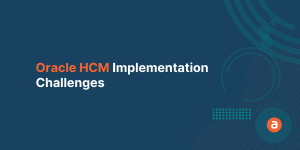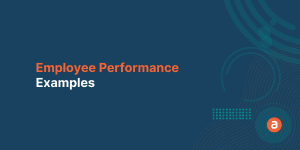A Business Continuity plan ensures how assets and personnel will be protected and be able to normally function during times of crisis. It helps organizations to create a system to overcome the possible or potential threats & aids in planning recovery strategies.
A Business Continuity Plan (BCP) falls under the organization’s risk management strategy. The risks include all aspects that can affect the company’s normal operations, including natural disaster. BCP covers all factors of a business’s endurance, affluence, and success.
What should a business continuity plan include?
A typical Business Continuity Plan (BCP) must include:
- Policy, purpose, and all potential risks
- Goals & objectives
- Key roles & responsibilities
- Data storage requirements
- Communication & feedback channel
- Business impact analysis reports
- Risk mitigation procedures & plans
- Business recovery & continuity strategies
The ultimate concern for companies during this pandemic is how to support remote employees or remote learning and ensure business continuity when it comes to day-to-day activities. To overcome these challenges, we need to have a Business Continuity Plan checklist.
The Business Continuity plan checklist is prepared based on a clear understanding of the impact of a crisis or a disaster situation. We have researched and prepared a 6-point effective BCP checklist, which we have summarized below.
The Effective 6-point Business Continuity Plan Checklist
- Risk assessment
- Business Impact Analysis (BIA)
- Critical Business Functions & Dependencies
- Recovery plan & phases
- Backup & Restoration procedure
- Test, Exercise & Educate
1. Risk Assessment
A risk assessment must always be a part of your Business Continuity plan checklist. It helps you to identify which potential hazards or threats impact your organization’s function and to evaluate these risk likelihoods.

These risks can differ based on industry type, organization size, economic conditions, location, and more. Risks can include
- Natural disasters
- Cyberattacks
- Operation downtime
- Power outages
- Data corruption
- System failures
- Hardware faults
and other malicious threats to data security.
Most often risk assessment is conducted by Risk Management (RM) professionals within the organization.
Thinks to be done to overcome Risk assessment for Business Continuity:
a. Identify business risks
List down all the factors that threaten your normal business operations. It includes both man-made and natural risks. Add these to your Business Continuity plan checklist.
b. Leverage ways to restore
Monitor risks and overcome them at the earlier stage. Spend more time on significant business operations, which must recover soon at the event of risks. Business Continuity Plan (BCP) checklist will help you to do the job.
2. Business Impact Analysis (BIA)
Business Impact Analysis (BIA) is the process of thoroughly analyzing the identified potential risks or threats. In other words, BIA helps you to gauge the impact of business risks or disruptions.

BIA and risk assessment go hand-in-hand. Once all the potential risks of your company are identified, find what will out their impact – Analyze how it will have an impact on business operations both financial & operational impact.
BIA can include:
- Employee productivity
- Return on Investment (ROI)
- Lost sales & income
- Increased expenses
- Employee churn
- Regulatory fines
- Customer dissatisfaction
How to perform BIA?
First, you must ensure you have an effective leadership team to analyze the impact. You must conduct meetings with all department heads. Things that you must discuss in the meeting:
- Type of analysis that needs to be done
- Members going to involved
- Organization’s key priorities
- Resource dependencies
- Day-to-day department activities
Second, include all these points in your BCP checklist. It is the management’s responsibility to conduct frequent department-level meetings and get the status of the BIA report.
Ensure you stick to your Business Continuity plan checklist to avoid mistakes. It is the best way to provide effective risk-treatment and keeps you on track.
3. Critical Business Functions & Dependencies
Critical Business Functions (CBF) are business processes or activities that you must restore (no matter what) during the event of risks to ensure business continuity and to protect the company’s assets.

One of the most important purposes of a BCP is to keep the critical business functions going. For that, you must identify the process & resources that are vital to the organizations’ survival and understand how are they dependent on one another.
Critical functions & Dependencies include:
- Department dependencies
- Flow of communication
- Reason for Downtime
- Function priorities
- Cashflow (settlement of financial obligations)
- Company market share & reputation
How to identify CBF & Dependencies for Business Continuity?
The process of identifying your CBFs will work closely with your analysis of risk assessment & BIA. You must prioritize your functions that are highly essential to run your business. From that, you will be able to identify CBFs, functions that are necessary to ensure business continuity during a disruption.
Once these functions are identified, put them on your Business Continuity Plan checklist. Each time when you conduct a meeting with your department heads make sure to stick to your checklist.
4. Recovery plan & phases
Recovery plans & activities are the most important for Business Continuity. The Recovery plan & phases must aim for Critical Business Functions. Plan of recovery & Phases of recovery must be included in your Business Continuity Plan checklist.

The recovery plan must proceed in the following sequence:
Disaster Declaration – When a crisis happens, the organization first needs to declare it & take the necessary decision to activate their recovery plan.
Plan Activation – Business Continuity Plan will be launched at this phase. It continues until your organization has set up & secured an alternative worksite, and your business operations are relocated.
Operations on alternative site – This phase is active until the primary facility is secured & restored by the business.
Shift back to the primary site – This phase continues until the business operations are moved back appropriately to the original site by the company.
5. Backup & Restoration procedure
Backup & Restoration are the important aspects of any Business Continuity Plan. These steps must outline data backup priorities & objectives, and the action plan that needs to be taken.

Companies have an enormous volume of physical documents that they need to maintain daily. There will be documents, contracts, records, files, and more which are equally important as the data saved on the hard drives.
You must try to convert all documents that can be digitized so that you can minimize the loss of physical documents.
Create your strategy or plan for backup & restoration, then add them to your Business Continuity Plan checklist. The plan in place should facilitate fast recovery so that your organization can recover tomorrow from any crisis that occurs today.
6. Test, Exercise & Educate
This is the last step in a comprehensive Business Continuity plan. Every significant business program must be tested & measured for its effectiveness.
This step primarily focuses on the policies on updating, testing & exercising your recovery plans. It helps you to identify gaps in your plans before an event of a crisis or a disaster.

At the time of crisis, communication within the company becomes vital. This step facilitates communication within the organizations to ensure employees, suppliers & partners know what to expect well before an event occurs.
Testing must include running simulations to test the employee’s preparedness level at the time of risks. Testing should occur on a regular basis (at least once a year) and you can consider tabletop exercises, simulations, or even a surprise incident.
Having this in your Business Continuity Plan checklist is highly important.
Pro-tip:
A Digital Adoption Platform is the best way to ensure Business Continuity irrespective of your challenges. Many companies face a lot of challenges due to the COVID-19 pandemic situation, most of your employees work remotely. We know how hard to get the maximum outcome from your remote employees.
Digital Adoption Platform like Apty is a cost-effective tool that you can consider to overcome challenges in training, onboarding, employee engagement, employee productivity, business continuity.













